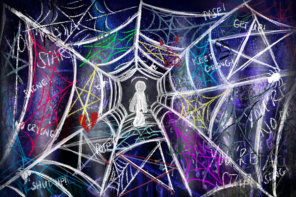Magic mushrooms, Ketamine, LSD, and MDMA are all becoming star subjects in scientific research surrounding mental health, but will this research translate to real and accessible treatments in the near future? It seems like the scientific community has more questions than answers.
The human race has a long and complicated history with psychedelics. Evidence acquired through a series of excavations in Bolivia dates the use of psychoactive substances back to more than 1,000 years ago. According to this research, native tribes crushed handmade tablets consisting of several compounds, including the active ingredient in magic mushrooms, to make snuff. This powder would then be smoked by a designated leader within a tribe. The tribe’s choice of smoking is extremely efficient and allows a person to feel every individual compound mixed into the prepared powder; thus, the small doses of various psychedelics most likely all had a purpose, allowing for an extremely deliberate and precise experience. These details suggest a deep understanding of the natural powers natives worked with.
…will this research translate to real and accessible treatments in the near future?
The art of crafting psychedelic experiences mostly flourished in South America, though Indigenous Canadian tribes have also developed their own practices. For instance, the Native American Church practiced religious ceremonies that utilized peyote, a psychedelic that causes hallucinations. However, this practice became a point of contention between the NAC and the Canadian federal government in the 1950’s as the media tried to change the perception of psychedelics; substances previously used to connect with human spirituality became known as “satanic” and “sinful,” and North America’s war on drugs quickly spread to magic mushrooms, MDMA, and Ketamine.
Decades later, these drugs have resurfaced as a potential therapy against one of the fastest-growing epidemics: mental illness. Half of the Canadian population will experience mental illness by the age of 40, with the rate of suicide being three times higher among Indigenous populations compared to the rest of Canada. As mental illness becomes such a widespread phenomenon, scientists all over the world are working to develop new and creative solutions to this problem.
From the 1970’s to the 2000’s, scientists have labored and lobbied for the proper scientific testing of psychedelic compounds. The rising support for nontraditional medicines such as medical marijuana has opened people’s minds to new ideas surrounding various types of drugs and their use, so much so that the FDA approved the use of ketamine in 2019 for research. However, psilocybin, the active component of magic mushrooms, has made the most headway so far in the world of research, especially at schools such as Johns Hopkins University, the University of South Florida, and Washington University. The current protocol for this research involves a combination of long-term talk therapy alternated with dosages of psilocybin.
…the research points towards a promising future for psychedelics in the world of mental health
These methods have proven hopeful for many. Psilocybin has been reported to treat severe forms of depression, PTSD, burnout, addiction, and even prolonged grief, among other disorders. While some test subjects have reported newfound clarity and peace after their treatments, these positive results have not been universal. Certain subjects have testified to feeling fear and distress, while others who did not undergo the proper talk therapy reported mania and increased feelings of depression. Thus, scientists’ knowledge surrounding the effects of psychedelics on the brain remains limited. Researchers hypothesize that psilocybin creates a burst of plasticity in the brain which allows participants to change harmful, self-inflicted loops that have developed due to patterns of thought or trauma, yet this is little more than an educated guess.
Despite these unknowns, the research points towards a promising future for psychedelics in the world of mental health. Yet if these drugs are approved and decriminalized, will individuals trust this new treatment?
When speaking to the generations of the 1960s, 70s, and 80s, many express fear surrounding magic mushrooms, MDMA, and LSD due to the common misconception that these drugs permanently damage human minds. Certain ads in the 1990’s even falsely stated that psychedelics punched holes in human brains, reinforcing the apprehension of many. Therefore, permanently altering one’s neurological connections seems extremely dangerous, but the human brain changes itself every day. Human brains reinforce their own connections and prune away those which are of less use; therefore, the change that the human brain goes through on a psychedelic trip in a controlled environment seems to be a highly accelerated version of what the brain does for itself.
Scientists will definitely need to continue intensive research to provide proper backing for their treatments, as many adults will not easily trust psychedelics. Yet, the drugs show promise, and today’s mental health crisis requires every possible solution available. But psychedelics still pose interesting questions about how far individuals are willing to go to alter their own minds. Fundamentally, psychedelics alter connections in the brain, connections which may have taken years or decades to reinforce; thus, breaking these connections could generate elemental changes in people, altering qualities left in them by their parents’ genetic code or how they experienced the world around them. The qualities that make them whole and human. We have now arrived at a point in the human timeline where we can alter our own neural connections and change our very sense of self, and with this amazing ability comes extreme responsibility, and many questions. What degree of mental illness is severe enough to be treated with psychedelics? At what point should we stop changing? What do we become if not the best and worst parts of ourselves?
Our questions are left unanswered, and we will once again be left to define the ethical limits of our own innovations.








